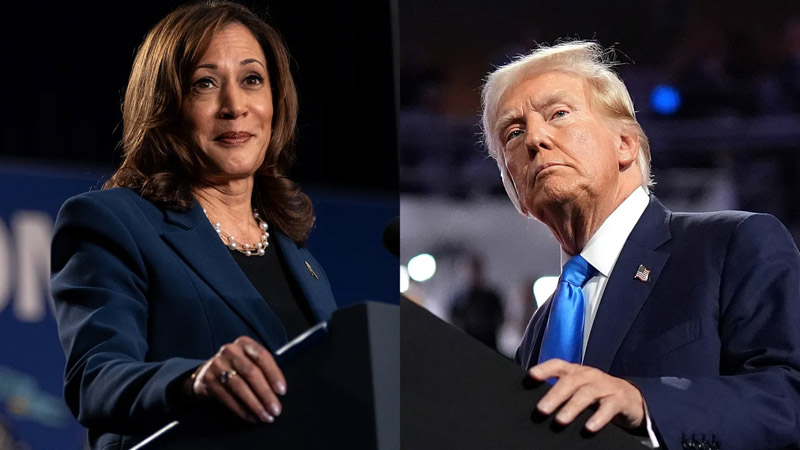As the presidential race between former President Donald Trump and Vice President Kamala Harris intensifies, GOP pollster Mitchell Brown has suggested a rare scenario that hasn’t occurred since 1988: neither candidate securing all three key battleground states of Pennsylvania, Wisconsin, and Michigan.
Speaking on Varney & Co. with Fox Business host Stuart Varney, Brown explained that, unlike recent elections, the “Blue Wall” states may not swing entirely to one candidate. During the interview, Varney asked Brown about the overall trend, questioning whether it favored Trump.
Brown affirmed that Trump’s momentum was strong, noting particular confidence in Southern states such as North Carolina, Georgia, Arizona, and Nevada. Shifting to the crucial battleground states, Brown highlighted the historical significance of Pennsylvania, Wisconsin, and Michigan in presidential elections, noting, “If you look in 2016, Trump won all three of those states; obviously, Biden won all three of those swing states…in 2020.”
Brown anticipates a departure from this trend in 2024, arguing that neither candidate will win all three states. “Trump just taking one would mean a victory,” he asserted, adding that Wisconsin and Pennsylvania appear most likely to lean in Trump’s favor. However, he suggested that if turnout trends favor Trump, he could conceivably win all three states, providing a strong electoral boost.

Given Pennsylvania’s 19 Electoral College votes, a victory there alone could decisively impact the election. Polling data in these states reveals a close race. In Pennsylvania, most polls indicate a razor-thin margin separating the Republican and Democratic candidates, with Harris and Trump nearly tied. In Wisconsin, The Hill’s aggregate polling shows Trump slightly ahead by 0.4 percentage points, standing at 48.5% to Harris’s 48.1%.
Michigan mirrors this narrow margin, with Trump leading by a slim 0.1%. Though Harris maintains a slight lead in national polling, the gap is quickly closing, prompting political analysts to forecast potential outcomes as Election Day draws nearer. Political analyst Nate Silver believes that three factors could sway undecided voters toward Trump: economic pressure, immigration concerns, and Harris’s association with current administration policies.
Silver’s model points to Trump’s advantage in the Electoral College, particularly in key battleground states. According to Newsweek, Silver’s projections align with RealClearPolitics’ polling averages, which show Trump with a slight edge in these critical states, winning by an average margin of 0.2 percentage points.

As the race tightens, these projections underscore the pivotal role that Pennsylvania, Wisconsin, and Michigan could play in determining the next president. With no single candidate expected to capture all three states, the 2024 election may hinge on narrow victories in select battlegrounds. Trump’s focus on maximizing turnout in these areas suggests a strategic approach to capture even one or two of these “Blue Wall” states, a move that could shift the overall outcome of the election.
Meanwhile, Harris’s campaign faces the challenge of not only maintaining national support but also closing the gap in these highly contested regions. As both campaigns make final pushes, the unpredictability of these battleground states highlights the unique nature of this election, with historical patterns poised for disruption and every vote carrying substantial weight.

